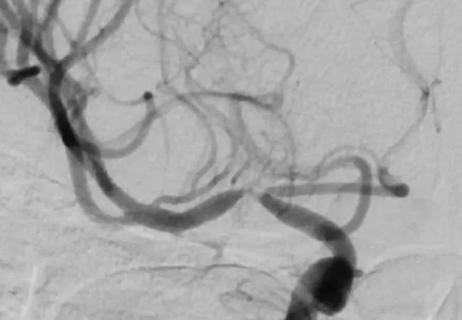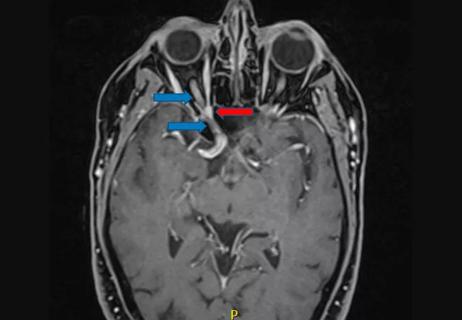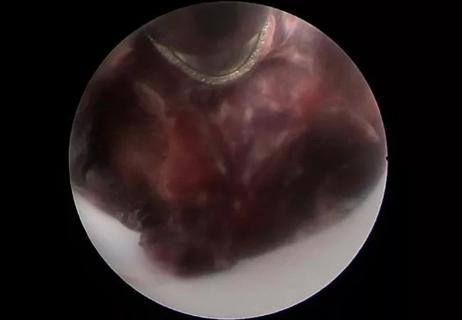Woman with myoclonic-like movements benefits from interdisciplinary therapy
By Xin Xin Yu, MD, and Taylor Rush, PhD
Cleveland Clinic is a non-profit academic medical center. Advertising on our site helps support our mission. We do not endorse non-Cleveland Clinic products or services. Policy
A 35-year-old woman with a history of focal epilepsy since adolescence developed sudden onset of truncal jerking and spasms that appeared different from previous seizures. These abnormal movements were described by the patient as “involuntary.” Her symptoms began suddenly and persisted with fluctuations throughout the day, causing significant disruption to her daily routine. She was evaluated in Cleveland Clinic’s epilepsy monitoring unit, where it was determined that these abnormal jerks were not associated with any EEG changes. A movement disorders specialist was consulted to further evaluate these myoclonic-like movements.
On examination, the patient’s abnormal truncal movements exhibited great variability in phenomenology, direction and severity. This included myoclonic jerks of varying duration as well as dystonic posturing with resistance to passive movement. When she was engaged in conversations or distracted with other tasks, her movements notably lessened in intensity and/or disappeared momentarily.
Based on her clinical history and neurological examination, a diagnosis of functional movement disorder (FMD) was made. While the patient was relieved to learn that there was a name for her condition and it could potentially get better with proper treatment, she had many questions about the diagnosis. The clinical team thoroughly explained and demonstrated the relevant clinical signs (e.g., variability and distractibility of movements) that informed the diagnosis. Muscle relaxation and distraction techniques were introduced to allow her to see that the abnormal movements could be overcome by certain strategies.
She was encouraged to ask questions, and the team made sure her concerns were validated and addressed. It was frankly explained that experts do not yet know the exact cause of FMD but that research to better understand the condition was increasing. She was encouraged to further review the education materials on reputable websites such as neurosymptoms.org and fndhope.org (FMD is a subtype of functional neurological disorder, or FND). Follow-up appointments with Cleveland Clinic’s interdisciplinary FMD clinic were made prior to her hospital discharge.
While development of effective treatments for FMD is still in nascent stages, preliminary research suggests that an interdisciplinary approach can yield optimal results. The patient was accepted into a four-patient pilot intensive outpatient program at Cleveland Clinic to address FMD symptoms. The two-week program consisted of daily physical therapy, occupational therapy, group and individual psychological therapies, and nursing education groups. Patients were also seen by a neurologist twice weekly.
Through participation in these various interventions, patients learned how to slowly retrain motor movements via distraction, volitional use of muscle groups and relaxation techniques. They were also extensively educated on the role of anticipatory anxiety and perceived helplessness on symptom exacerbation, learning approach-oriented strategies to cope with distress related to their symptoms. The pilot’s overall goal was not only to help patients minimize involuntary movements but to also increase confidence in their ability to control their body and empower them to engage in their lives.
Our case patient learned how to use stretching and muscle relaxation routines to help alleviate spasms, minimize and manage triggers that would make them worse (mainly via graded exposure techniques), and restructure negative cognitive appraisals that lead to increased hypervigilance and behavioral avoidance patterns. She also devised a work reintegration plan. Her symptoms became much less frequent and less severe. She noted feeling more control over her symptoms and no longer believed they had to prohibit her from activity.
Overall, the pilot FMD program was considered a success. All patients reported improvement in FMD symptoms at discharge and gave the program high satisfaction ratings. We are now planning a sustainable outpatient program that can be offered intermittently throughout the year on Cleveland Clinic’s main campus.
Discussions with providers about FMD diagnosis and treatment reveal that many admit feeling helpless to address these symptoms. While the treatment typically requires a coordinated care approach, addressing symptoms honestly and validating patients’ experiences is a first step that can be taken by any provider. Using simple language to express that this is a brain connectivity issue rather than a permanent structural issue allows patients to feel heard and gives hope that symptoms can improve.
FMDs are mostly genuine. Malingering cases are thought to be rare. FMD is no longer a diagnosis of exclusion, nor does it rely on finding a psychological stressor. It is a “rule-in” diagnosis that can be made by identifying positive neurological signs specific to FMD.
Older terms such as “stress-induced” or “psychogenic” carry a negative connotation. In our experience, these terms hinder patients’ acceptance of the diagnosis as well as initiation of and adherence to the recommended treatments. “Functional” can work much more effectively to explain the nature of the condition and increase patients’ willingness to accept the diagnosis.
FMDs may coexist with other neurological conditions, such as epilepsy in this case. There is a natural tendency to focus on treatment of the “organic” condition and place less emphasis on the functional components, as the latter have traditionally been viewed as “not real” or perhaps “less serious.” Yet functional disorders can be as disabling as organic conditions. Both conditions must be assessed, with focus given to treatment for the one that is most disabling. This is crucial for the patient’s overall prognosis and quality of life.
Dr. Yu is a fellowship-trained movement disorders neurologist and Dr. Rush is a clinical health psychologist, both in Cleveland Clinic’s Center for Neurological Restoration.

When specialized surgery makes sense for moyamoya syndrome

Multilevel cervical fusion restores function in an athletic 78-year-old

Case study underscores the imperative for thorough evaluation with SEEG

Schwannoma of the lacrimal nerve threatened right eye blindness

Case report demonstrates utility in a brain-injured patient

Partial resection plus radiation leads to good outcome from an unpredictable tumor

Diagnosis and treatment of rotational vertebrobasilar insufficiency syndrome

First reported case expands use of minimally invasive techniques